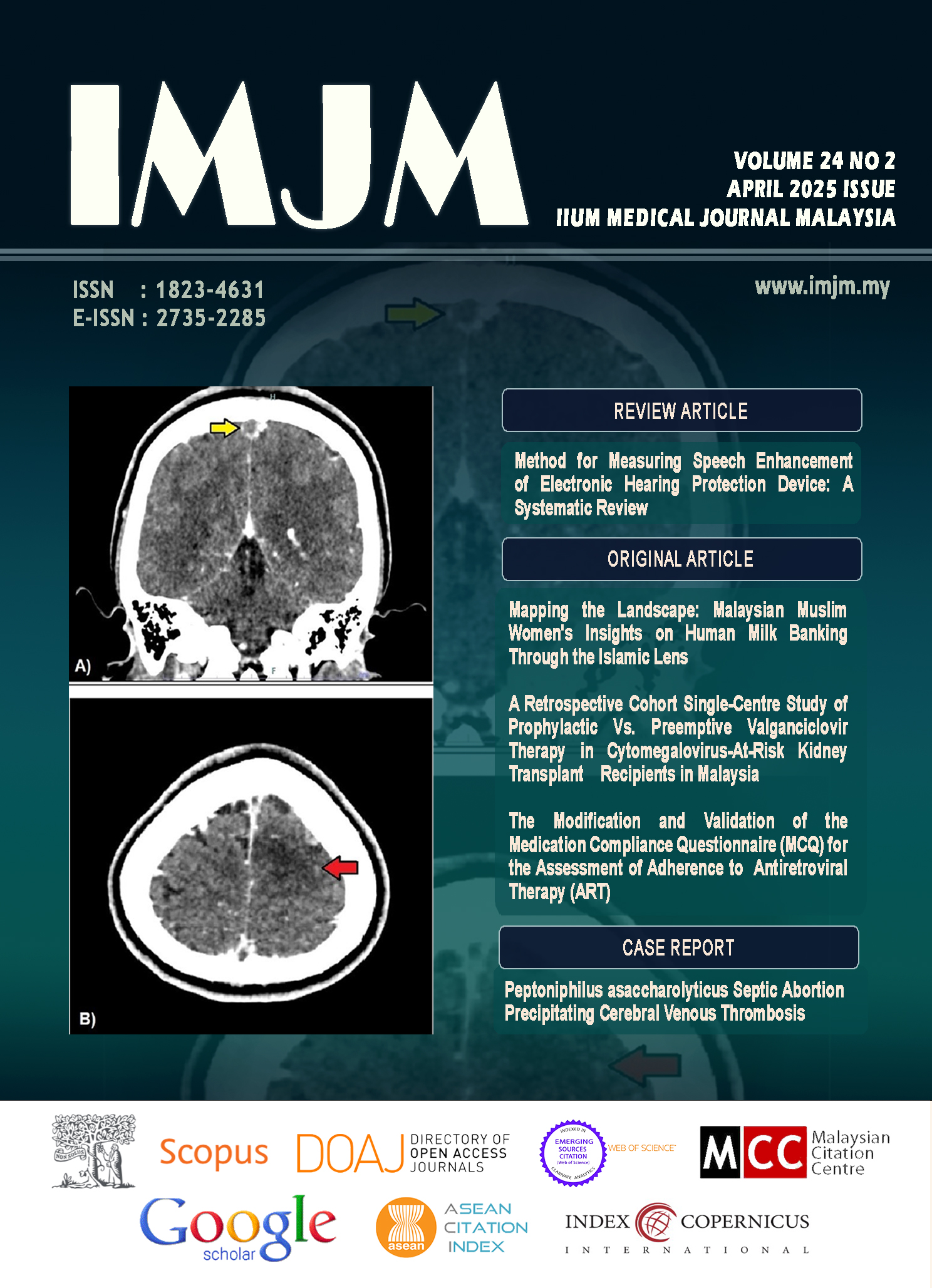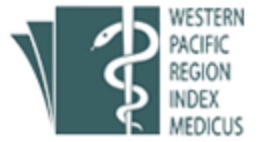Prevalence of Premature Ejaculation and Its Associated Factors Among Men Attending Government Health Clinics in Kuantan, Pahang
DOI:
https://doi.org/10.31436/imjm.v24i02.2650Keywords:
sexual dysfunction, premature ejaculation, stress, anxietyAbstract
INTRODUCTION: Premature ejaculation (PE) is a common sexual dysfunction affecting men globally, often underdiagnosed and under-treated. Its prevalence varies across different sociocultural and geographical settings. The objective of this study is to determine the prevalence of PE and its associated factors among men attending government health clinics in Kuantan, Pahang, Malaysia. MATERIALS AND METHODS: A six-month cross-sectional study was conducted from April 2023 to September 2023 at twelve health clinics. The respondents who were selected were sexually active men over the age of 18 years. Those with psychiatric illness or illiteracy were excluded. Data were collected using the validated Malay version of the Premature Ejaculation Diagnostic Test (PEDT) and the Depression, Anxiety, and Stress Scale (DASS-21). PE was defined as a PEDT score above 9. Descriptive analysis and simple and multiple logistic regression were performed using SPSS. RESULTS: Out of 300 eligible men, 287 responded (95.7% response rate). The prevalence of PE was 32.4% (n=93), with 17.8% (n=5) classified as probable PE and 14.6% (n=42) as PE. Multiple logistic regression showed PE were significantly associated with stress [AOR (95% CI): 3.83 (1.33–11.00); p-value=0.013] and anxiety [AOR (95% CI): 2.60 (1.29–5.25); p value=0.008]. CONCLUSION: The study revealed a high prevalence of PE among men and potentially linked to stress and anxiety. Raising awareness among the public and healthcare providers can improve detection rates in primary care. Therefore, routine PE screening is recommended for men attending health clinics, and such measures would facilitate early diagnosis and treatment.
Downloads
Downloads
Published
How to Cite
Issue
Section
License
All material submitted for publication is assumed to be submitted exclusively to the IIUM Medical Journal Malaysia (IMJM) unless the contrary is stated. Manuscript decisions are based on a double-blinded peer review process. The Editor retains the right to determine the style and if necessary, edit and shorten any material accepted for publication.
IMJM retain copyright to all the articles published in the journal. All final ‘proof’ submissions must be accompanied by a completed Copyright Assignment Form, duly signed by all authors. The author(s) or copyright owner(s) irrevocably grant(s) to any third party, in advance and in perpetuity, the right to use, reproduce or disseminate the research article in its entirety or in part, in any format or medium, provided that no substantive errors are introduced in the process, proper attribution of authorship and correct citation details are given, and that the bibliographic details are not changed. If the article is reproduced or disseminated in part, this must be clearly and unequivocally indicated.










